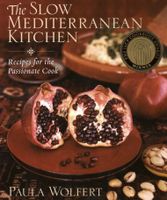Advertisement
Preparation info
- Serves
8
- Difficulty
Medium
Appears in
Published 2003
Corsicans make a glorious version of cheesecake using their favorite fresh cheese, brocciu, a goat or ewe’s milk cheese: white, light, and soft when fresh. If you drain ricotta and push it through a sieve, you will obtain an excellent substitute.
I first tasted this Corsican cheesecake (fiadone) in Ajaccio in early June, when the local brocciu cheese season was nearly over. The cake was a revelation: simple, wobbly, delicate, and creamy throughout, with a thin black to


